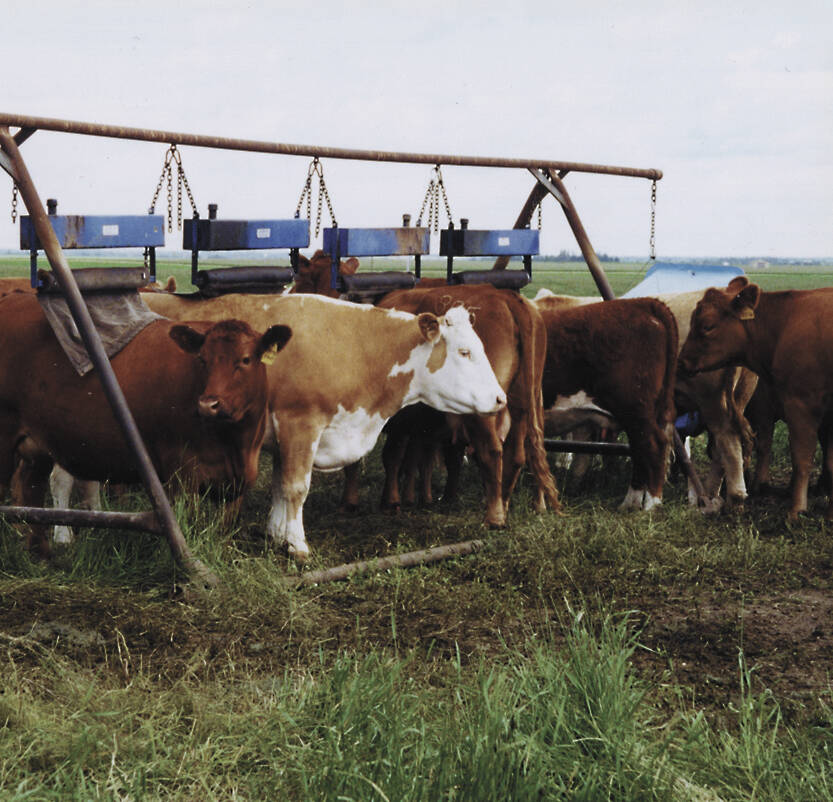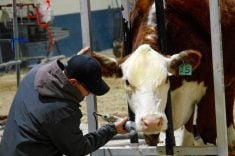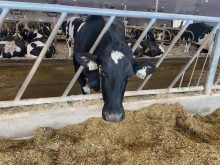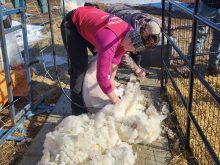Asmall flock of longtime shepherds has hit the road to recruit members for a proposed lamb-marketing co-operative in Manitoba.
Proponents of the fledgling Agassiz Lamb Co-op want to get better prices for their lambs and boost the sheep industry’s long-term fortunes in Manitoba.
So far, after two of five scheduled meetings in Brandon and Souris, five producers have written $500 cheques to join the fledgling Agassiz Lamb Co-op, said Randy Eros, organizer and co-owner of Seine River Shepherds in Ste. Anne.
Meetings are also set for Carman, Dauphin and Teulon in the coming weeks.
Read Also

Shifting standards on cattle parasite control
Parasite product resistance has more farmers and veterinarians thinking differently about how to control issues like lice or worms.
Eros hopes to convince anywhere from 20 to 40 sheep producers to join the co-op, which requires payment of a $100 share and $400 membership.
“What would be the ideal number? The operation is very workable with somewhere between 20 and 40, but if there are fewer than that, we might have to take a second look at what we would do,” said Eros.
MEMBER COMMITMENTS
Members must be able to provide at minimum 20-head lots of like-sized lambs for shipments – initially to markets in Ontario – and be willing to share production and carcass information, as well as pay a $5-per-head marketing fee to the co-op.
The current round of meetings are being funded by Manitoba’s Cooperative Development Fund. If enough interest is found, an application for two years of startup funding will be written and submitted to the Manitoba Rural Adaptation Council (MRAC) in early May.
If all goes as planned, Eros said, the first shipments of lambs to markets in Ontario could begin by early September.
The co-op idea was hatched by Eros and fellow sheep producers Henry Nelson and Howard Alexander with the assistance of MAFRI value chain specialist Jayne Kjaldgaard. It is an offshoot of a recent value chain study undertaken by the Manitoba Sheep Association that was aimed at putting locally grown lamb on store shelves in the province.
ON HOLD
Plans for that were put on hiatus after it was determined that rounding up a consistent supply of lambs to supply abattoirs and retailers was the biggest hurdle to overcome, and that drastically altering current marketing channels would be too costly.
“The value chain was singularly about moving lambs into the Manitoba market,” said Eros. “When we sat back, we realized that there’s probably a different direction that we need to go before we can do that.”
Instead, a core group of sheep producers decided to form a co-op with an easier initial target: organized monthly shipments of lambs to existing markets in Ontario from muster points in Manitoba.
“Why go east? It’s already an existing, minimum-risk market. The lambs get sold, the money’s there, they’re going there anyway – it just makes good sense,” said Eros.
Then, once a firm marketing structure is established, the co-op would be able to divert the steady supply of lambs that local abattoirs and retailers need to meet “hot” demand in the Manitoba market.
“Currently, there is no structure for moving lambs,” said Eros, apart from a couple of private buyers who operate lamb feedlots and ship finished lambs to Ontario and, to a lesser extent, Alberta and the United States.
“In order to convince an abattoir to kill, you need to have a supply of lambs. We can produce lambs, but producing lambs and having a supply of lambs are two different things.”
The co-op’s long-term plans are to generate higher prices for lambs by first establishing shipping protocols and opening up more diverse market opportunities, such as for loads of cull ewes.
Members would receive marketing information on all co-op members’ lambs, including shipping weight, sale weight, shrinkage, feed, breed/price comparisons, and eventually, carcass data.
Information sharing could include weight, prices, feed, and genetics data distributed to members through educational seminars and other means in order to collectively create a more consistent product, and spread out supply over the year.
Also, by promoting the co-op’s lamb production criteria, the co-op hopes to be able to negotiate direct shipments to feedlots and abattoirs at premium prices.
Other goals include the development of grid-based price models, a carcass-weight classification system, and eventually making better use of RFID tag data.
daniel. [email protected]
———
“Whygoeast?It’salreadyanexisting,minimum-riskmarket.Thelambsgetsold,themoney’sthere,they’regoingthereanyway–itjustmakesgoodsense.”
– RANDY EROS














